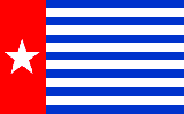With several hundred gold mines producing worldwide, almost every country is home to at least a few. The world’s largest gold mine is the Grasberg Mine in the province of Papua, Indonesia, operated by Freeport-McMoRan Copper & Gold [NYSE:FCX]. Open pit operations began in 1990 and today the deposit holds a remaining 38.5 million ounces of proven and probable gold reserves.
There are various factors to consider in determining the value of a gold deposit and world class deposit status, including estimated gold resource, the grade of the gold, the ease at which the gold can be mined and the cost of refining the gold.
Average Grade
Ore grade refers to the proportion of gold contained in the ore of a particular mine and is represented in grams per tonne (g/t). According to the World Gold Council (WGC), larger and better quality underground mines contain around 8 to 10g/t, with marginal underground mines have averages of around 4 to 6g/t. Open pit mines usually have lower grades from 1g/t to 4g/t, but can be highly valuable despite the lower average grade. A more useful measurement, says the WGC, is cost per ounce, which uses a combination of grade and operating costs (USD/tonne).
Mining Costs
The cost of mining an ounce of gold varies greatly between mines and involves many variables. One increasingly important factor weighing on mining costs is that gold production is becoming more and more reliant on several smaller operations rather than larger-scale operations, which has raised development and operating costs in the industry as a whole.
Gold is extremely rare with an average concentration of 0.005 parts per million in the Earth’s crust. Gold mining firms must work with large quantities of ore just to extract small quantities of the yellow metal, making extraction an expensive process, and in turn creating a lower limit on the grade at which the mineral can be profitably extracted.
Type of Ore
Gold deposits are formed by a widerange of geological process, occur above and below the surface of the earth, usually alloyed to silver as electrum or with mercury as an amalgam, and can occur as nuggets, fine grains or flakes, or as grains or microscopic particles in other rocks.
Many primary orebodies are found in greenstones, thought to be ancient volcanic rocks, and include gold-copper porphyries. These ore bodies are usually very large and overtime these types of primary deposits have been eroded and the gold re-deposited in secondary deposits such as alluvial deposits.
Alluvial, or placer, deposits are found on the surface usually created by running water, typically rivers. Due to its extreme density, gold will easily fall from suspension as water slows, creating placer deposits in a trap site, such as the inside bends of rivers and creeks. By their nature, these types of deposits allow for simple extraction processes.
The above surface location and ease of extractability of this type of deposit has left the world with few economically important placer deposits. Also, the development of heap leach technology has made primary underground deposits much more accessible and economically viable.
Underground gold veins, or lodes, are found in association with a variety of other metallic deposits including sulphides and pyrites.
According to the World Gold Council, a majority of primary deposits have an oxidized skin of anywhere from a few inches to hundreds of feet thick. This oxidized state helps to break down the other minerals ensconcing the gold, making extraction much easier, especially when heap leaching methods are applied and followed up with carbon-based extraction, including inexpensive Carbon-in-leach and heap Carbon-in-pulp methods.
Deposits of abundant oxidised ore with little waste rock can be highly profitable; however, if gold is mixed with iron and other metals in sulphides, extraction can prove difficult and costly.
Examples of World Class Deposits
Along with the aforementioned Grasberg Mine in Indonesia, other leading world class deposits include:
KSM project in British Columbia, Canada operated by Seabridge Gold [TSX:SEA].
Yanacocha Mine in Peru operated by Newmont Mining [NYSE:NEM] in a joint venture with Compania de Minas Buenaventura.
Boddington Mine in Australia operated by Newmont Mining.
Pascua Lama straddling the border between Chile and Argentina, operated by Barrick Gold [TSX:ABX] [NYSE:ABX].
Penasquito in Zacatecas, Mexico operated by Goldcorp [NYSE:GG].
Fruta del Norta in Ecuador operated by Kinross Gold Corp. [TSX:K] [NYSE:KGC].
Caspiche deposit in Chile operated by Exeter Resource Corp. [TSX.V:XRC] [NYSE-A:XRA].
